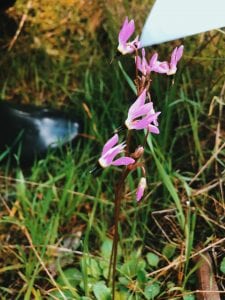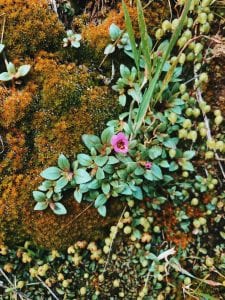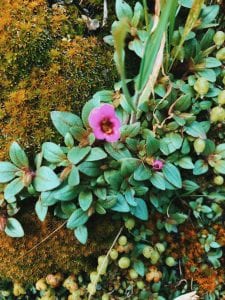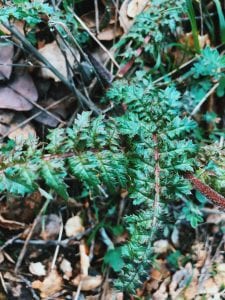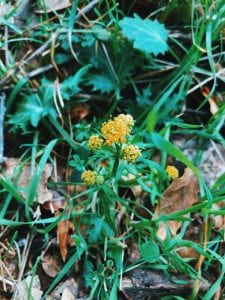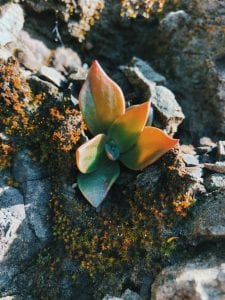Mount Tamalpais: February 28, 2019
On February 28th, our botany class took a trip to Mount Tamalpais in Marin County, California. We hiked along the Yolanda Trail, which wraps around Phoenix Lake (one of the 5 lakes within Marin County). The trail itself is close to the watershed, which we saw when we began our hike. California bay trees, black oak, coast like oak, and madrones were a common sight throughout the trail, as were common invasives such as Scott’s Broom and French Broom. 
37.958217, -122.572152
Mosquito bill, or shooting star (Primula hendersonii) is a perennial herb belonging to the Primulaceae family. It is native to California and confined to western North America. Its leaves are basal and rubbery. The blade of the leaves are elliptic-ovate with entire margins and acute-obtuse apices. Its stem is red-purple in color. The stamen are thrust out and the petals are “reflexed,” or bent back to give the flower the appearance of a mosquito’s bill. The plant is summer deciduous, dying shortly after the rain ceases, so it is unlikely that we will run into this plant on future field trips.
Congon’s monkeyflower (Diplacus congdonii) are annual herbs belonging to the Phrymaceae family. These plants are endemic to California and prefer to grow in moist areas on canyon slopes and sometimes in disturbed areas. The leaves are elliptic, pubescent, 2-ranked, and oppositely arranged. The flowers are bilaterally symmetrical and have bright pink petals, making them very attractive to pollinators. Overall, the monkeyflower doesn’t grow to be too large – the stem doesn’t grow to be more than 10 cm while the flowers and leaves are often around 3 cm.
Warrior’s plume (Pedicularis densiflora) is a perennial herb belonging to the Orobanchaceae family and was our first sighting of an Orobanchaceae flower. The stem is red-purple and hairy. Its leaves are basal and highly dissected.The flowers are arranged in a “cone” inflorescence and the flowers themselves are hairy and bilaterally symmetrical. Like other Orobanchaceae flowers, the Warrior’s plume is a root parasite but it is hemiparistic, meaning it can survive without parasitizing on another plant (though it definitely wouldn’t turn down a promising opportunity). The Warrior’s plume is actually closely associated with manzanitas, which we’ve frequently seen on field trips but not as much this time around. Generally, the Warrior’s plume prefers to grow on slopes in woodlands and chaparral.
It had been raining all week, but miraculously cleared up just in time for our trip. Somehow our botany class managed to get the weather gods on our side because despite raining for days on end, the sun consistently shines on Thursdays (except for a partial gloomy day in the Presidio). Pretty early into the hike, in order to get a good look at the Congdon’s monkeyflower we hiked (or for some like me, tripped) up an incredibly steep slope in pairs. Although I definitely thought I was going to fall to my death at least once during the perilous journey up, it was definitely worth it. The rest of the hike was much easier in comparison – we passed through a charming oak knoll, hopped over a few mini-waterfalls, and took in the beautiful landscape (I thought I would fall off the trail at some points with how often I was taking in the landscape instead of watching where I was going). Overall, I think this was probably my favorite field trip so far and can’t wait to explore new areas of Mount Tamalpais on future trips!
Honorable Mention Species
